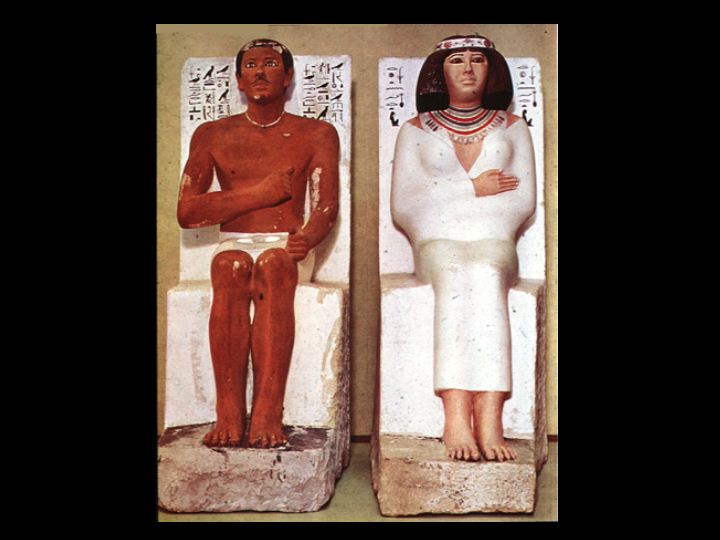“Semitic” is a linguistic designation, and has little to do with “race,” whatever that difficult term has come to mean. Modern linguists recognize the Semitic languages as part of a larger family called Afro-Asiatic. Other languages in the Afro Asiatic family include Ancient Egyptian, Hausa, Somali, Amharic and other languages of Ethiopia.
The ancestral home of proto Afro Asiatic is thought to be the highlands of East Africa, what is now Ethiopia and Kenya. The ancestors of Semitic languages migrated from East Africa into the Arabian peninusula where they may have mixed with speakers of languages related to the Indo European family. Other branches of Afro Asiatic speakers migrated into ancient Egypt, and what is now Nigeria and Chad. The greatest number of Afro Asiatic languages are found in Ethiopia.
Generally speaking, the ancient Egyptians were quite racially mixed, and different peoples moved in and out throughout its several thousand year history. So the question “what ‘race’ were the ancient Egyptians?” can only be answered, “Which ancient Egyptians? What part of Egypt? What time in history?”
In ancient Greek and Roman literature, there are repeated references to the ancient Egyptians as “blacks” whose physical appearance resembles those other peoples of Africa. While it’s fairly clear that all of the ancient Egyptians weren’t black, especially those in the more populous, more diverse, northern part, the ruling classes often were “black” as we Americans commonly understand the term. This is because the ruling classes tended to come from the southern part Egypt, where most people were “black” by any reasonable definition.
For example, Mentuhotpe II, the founder of the Middle Kingdom, came from a southern Egyptian noble family, and led a long military campaign to successfully reunify Egypt. http://www.egyptarchive.co.uk/images/cairo_museum/22_mentuhotep.jpg
The face depicted on the Sphinx, most likely that of an Egyptian ruler whose identity is lost to history, is “black”, that is, phenotypically Negroid. High cheekbones, full lips, prognathism etc. The French writer Flaubert, on seeing the Sphinx for the first time, said, “Alas, it is Negroid.”
Other “black” ancient Egyptian nobles:
Tutankhamen:
http://www.freemaninstitute.com/Gallery/Egyp059_big_copy.jpg
Discovery Channel recreation of Tut, more accurated than Nat Geo’s recent one:
http://dsc.discovery.com/anthology/unsolvedhistory/kingtut/face/face.html
Queen Tiye, thought to be Tut’s grandmother:
http://www.utexas.edu/courses/classicalarch/images1/TijeWoodD18.jpg
Rahotep, Old Kingdom noble:
http://www.egyptarchive.co.uk/html/cairo_museum_06.html
Pharoah Menkaure:
http://www.egyptarchive.co.uk/html/cairo_museum_11.html
http://www.egyptarchive.co.uk/html/cairo_museum_21.html
Pharoah Djedfra:
http://www.eglyphica.de/egpharaonen/inhalt/kings/djedefra/steckbrief_pic.html
The issue is made more complex by the extensive racial mixing from the earliest period on, among the nobility as well as the comon people (Rahotep and wife):

Contemporary Egyptologists, Egyptian authorities, as well as historians and antiquarians, have a vested interest in downplaying or hiding the black African element in ancient Egypt. Tourist dollars, public support for funding, and overall social status depend on the ancient Egyptians being percieved as “white” or Caucasoid as possible.
So it isn’t a case of the Afrocentrists being “wrong” and the mainsteam scholars being “right”. Politcal and social considerations color the claims made by both sides.
 )?
)?